Easy and Fun Way to Learn Popular Text Coding Languages
Tynker makes learning even complicated text programming languages
super fast and a lot of FUN! Perfect for all skill levels!
Your Child can Learn all
Common Text Languages with Tynker
Ready to discover STEM opportunities and test the limits of your imagination — but not sure where to start? At Tynker, we have you covered with courses for the top text coding languages.
HTML
Hypertext markup language (HTML) forms the basis for webpages and is a great place to start learning the basics of code.
CSS
Cascading style sheets (CSS) are used to define how HTML content appears on webpages. CSS lets you add formattings such as background and text colors, text alignment, font types, and font sizes.
JavaScript
JavaScript is the go-to programming language for the web. Since it’s more advanced than HTML and CSS coding, it’s a good idea to get a handle on these two languages before kids move to more in-depth options such as JavaScript.
Python
Python is a popular programming language often used to create web applications, improve workflows and handle big data.
Get a Head Start in Coding for the 21st Century
Text coding knowledge has become an essential skill but learning to code using traditional methods can be frustrating and challenging. Tynker is different. Our revolutionary platform makes it fun to learn how to code.
Other Reasons Coding Has
Become Popular
The right approach to kids coding languages can help develop problem-solving and boost critical-thinking skills. This is all while kids test the limits of their imagination to discover where they excel, what they can build and how to make it work.
Tynker is the top platform for kids programming languages, offering everything kids need to learn programming in a fun way. With more than 40 award-winning block and text-based courses, 3,700 learning modules, and access to a host of popular languages, Tynker has everything kids, parents and teachers need to crack the code and discover their STEM potential.
Learn Programming Languages at Home
Our home plans offer everything your child needs to start learning text based coding languages.
Choose Live Online Courses
Learn Programming Languages at Home
Our home plans offer everything your child needs to start learning text based coding languages.
Choose a 3-Year Self-Paced Plan
Quarterly
Yearly
Lifetime*
Quarterly
Yearly
Lifetime*
Access everything Tynker offers, plus expert coaching
-
Hide Details
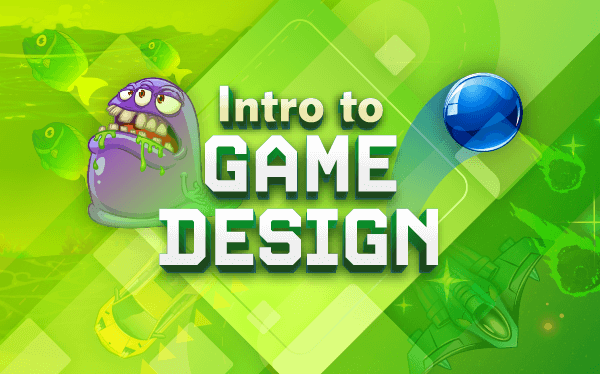
Intro to Game Design
Ages: 7-12
Skill Level: Beginner
Format: Online Private 1-on-1 Lessons
Classes: 6 one hour classes$199Add to cartLearn to design and build your own games in 6 fun-filled classes. Code classic games or build something totally new.

Lesson 1: Mouse Maze
Write your first game! Code a simple skill-based game controlled with the mouse. You'll need a steady hand to reach the goal.
- Mouse events
- Color-sensing code
- Winning and losing conditions

Lesson 2: Go Kart
Take the wheel and explore how to add keyboard controls to your game. Avoid the oncoming obstacles.
- Keyboard events
- Collision detection
- Cartesian coordinates
- Loops and iteration

Lesson 3: Base Defense
Create a tower defense game. Make complex games with loads of enemies — and handle projectiles.
- Clone actors with code
- Make bullets and lasers fly
- Add randomness to your games

Lesson 4: Space Voyager
Create a dodger game with powerups and collectibles. Add an invincibility powerup — or invent your own.
- Coordinate the action using messages
- Keep score with variables
- Manage game state

Lesson 5: Ball Pop
Make a colorful chain-reaction puzzle game. Can you make ALL the balls pop with just a single click? Explore advanced coding and animation techniques in this lesson.
- Events and broadcasts
- Puzzle game basics
- Get more practice with clones, color-sensing, and randomness

Lesson 6: Bank Shot
Explore Tynker's Physics Blocks to create a fun game with collisions, action, and motion.
- Control gravity
- Change Actors' physics properties
- Give objects a push with impulse and much more

Game Developer Certification
Be proud of what you've created! Keep up the momentum and continue on your learning journey.
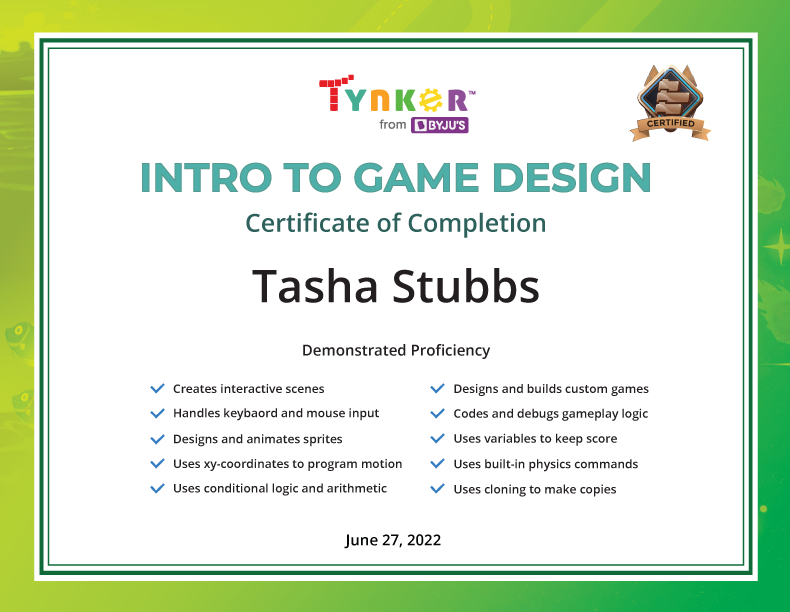
-
Hide Details
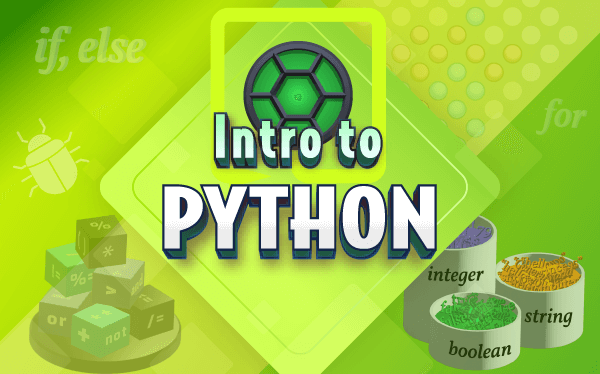
Intro to Python
Ages: 12+
Skill Level: Beginner
Format: Online Private 1-on-1 Lessons
Classes: 6 one hour classes$199Add to cartExplore Python in 6 interactive classes. Progress to solve real world problems in math and science, design games, & more!

Lesson 1: Python Basics
Get acquainted with the basics of Python programming. Then explore how to represent repeating patterns with code.
- Function calls
- For loops
- Python syntax basics

Lesson 2: Conditionals
Explore boolean values, boolean logic, if statements, and while loops. Write programs that “make decisions.”
- Selection and conditional statements
- Explore digital logic
- Debugging tricks and techniques

Lesson 3: Variables
Learn about variable initialization, declaration, and more. Then get some practice with lists, a useful data structure.
- Variables and datatypes
- Expressions and operators
- Store loads of data with lists

Lesson 4: Turtle Graphics
Create graphics and user interfaces with the Turtle module. Explore functions, a way to keep code organized and repeatable.
- Write custom functions
- Draw on the screen with code
- Import Python modules

Lesson 5: Game Design
Design games with an interactive canvas and write programs that respond to key-presses, mouse events, and more.
- Keyboard control and mouse events
- Implement game logic and loops
- Code several games from scratch

Lesson 6: Capstone Project
Put together everything you've learned to create a fun, playable arcade game. In this final project, you will create a Brick Breaker game using Turtle Graphics.
- A challenging self-guided project
- Extend the game with Bonus Challenges

Game Developer Certification
Be proud of what you've created! Keep up the momentum and continue on your learning journey.
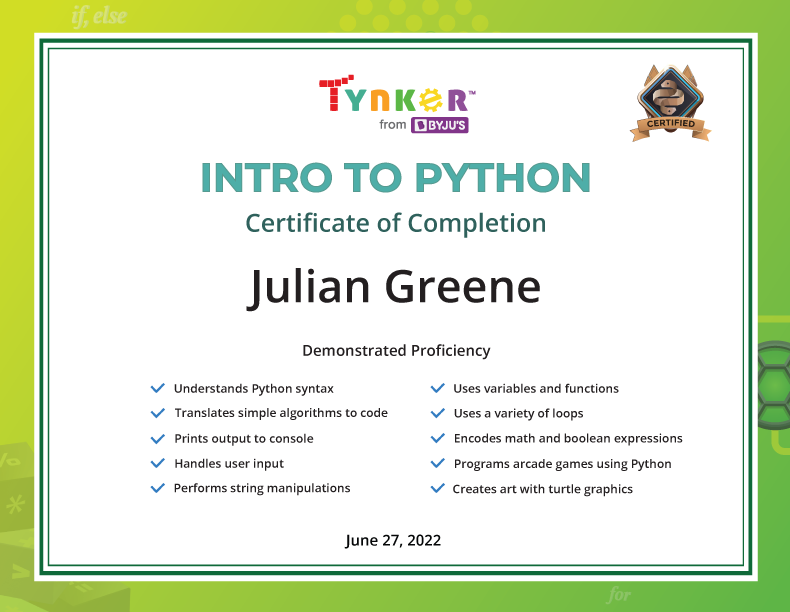
-
Hide Details
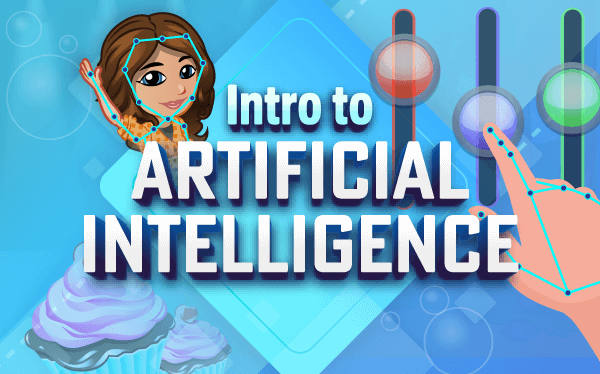
Intro to Artificial Intelligence
Ages: 7-12
Skill Level: Intermediate
Format: Online Private 1-on-1 Lessons
Classes: 6 one hour classes$199Add to cartLearn to use Artificial Intelligence and Machine Learning in your block coding projects. Make your code come to life in an all-new way.

Lesson 1: Mad Hatter
Explore the basics of AI with the Face-Tracking blocks. Create a costume that follows you, wherever you go! Add a wizard hat, clown nose, cowboy mustache, or whatever else you like.
- Show and enable Face-Tracking
- Switch costumes with code
- Work with live video

Lesson 2: Face Painting Booth
Draw on a 3D face mesh! Make a carnival-style face paint creation. Create a costume or add glamorous makeup.
- Explore Face-Tracking landmarks
- Use the face-effect block to draw on a face mesh

Lesson 3: World Traveler
Create a greenscreen effect with live video and the Pose-Tracking blocks. Make a different animal appear as you change the scene.
- Enable Pose-Tracking and work with body segmentation
- Switch backgrounds with code
- Use mouse events to control where you go

Lesson 4: Protect the Cupcake
Use the Hand-Tracking blocks to create an augmented reality "defense" game. Don't let the foxes steal your food!
- Show and enable Hand-Tracking
- Use positions of hand landmarks to control the motion of actors

Lesson 5: Bubble Frenzy
Create a game using the Hand-Tracking blocks. The bubble only pops if you follow the instructions, exactly! Explore Hand-Tracking landmarks and game logic.
- Use dictionaries to represent landmarks efficiently
- Use positions of hand landmarks to control game flow
- Use variables to keep track of game state

Lesson 6: Turtle Racer
Use the Hand-Tracking blocks to create a virtual game controller! Control where the actor goes using a virtual steering wheel!
- Show and enable Hand-Tracking
- Use angles of landmarks to control the motion of actors
- Use variables and positions of actors to control game flow

AI Developer Certification
Be proud of what you've created! Keep up the momentum and continue on your learning journey.
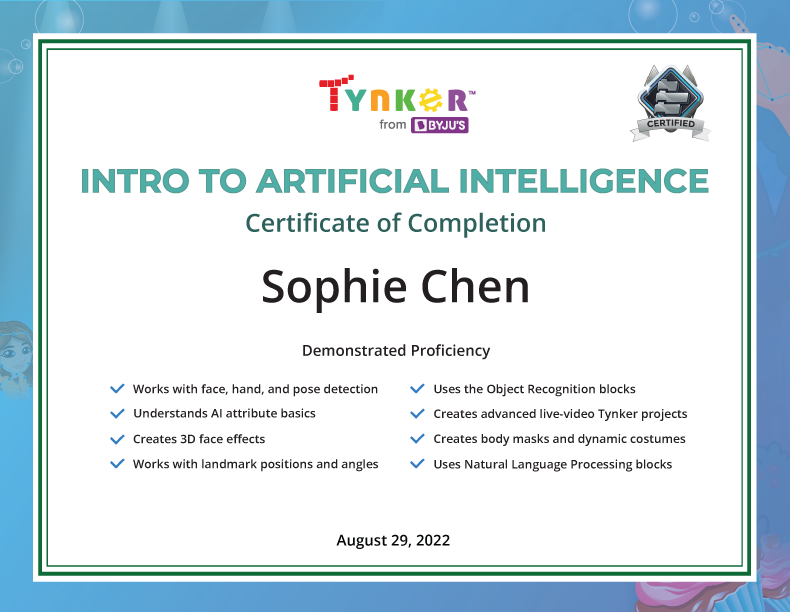
3-Year All-Access plans include:
- 70+ courses
- 5,000+ activities
- Block Coding
- Text Coding
- 3 Mobile Apps
- Minecraft Modding
- Game Design
- Robotics
- Hardware
- Web Development
- Python
- JavaScript
- Processing (P5.JS)
- Data Science
- Advanced CS
Tynker is designed to progress with your child. A three year plan accelerates their coding mastery from block coding to advanced text languages.
Breaking the Language Barrier
At Tynker, we’ve created coding curriculums that work for any age and help keep kids engaged throughout the learning process. Ready to crack the code and break the language barrier?
FAQs
-
Why should kids learn to code?
Science, technology, engineering, and math (STEM) education has become a top priority for parents and teachers over the last few years as job markets shift and new career opportunities emerge. According to a recent study, 90% of parents now want their kids to study computer science, and learning to code with one or all of the popular text coding languages is a must in STEM or any computer science and a must in a 21st-century world.
The benefit of exposing kids to text-based programming languages early is that the syntax of a programming language is like the grammar of a foreign language. The earlier kids are exposed to a language, the easier it is for them to pick up.
-
Why should kids learn programming languages?
Many kids have an interest in coding, but they — and their parents and teachers — aren’t sure how to learn programming languages in a way that helps drive ongoing interest. While most kids’ programming courses offer the basic skills and techniques to create clean, functioning code, they lack the focus on the fun that kids need to stay engaged.
-
Does Minecraft use Text Coding like Java?
Massively popular game Minecraft offers an easy example. Released in 2009, the game shows no signs of slowing with more than 126 million players online every month. Coded in Java, the game uses straightforward mechanics and simple graphics to create an immersive experience — and demonstrates the potential of coding skill at scale.
-
Does Learning Text coding help kids develop critical thinking and other skills?
This isn’t the only reason learning programming languages for kids are becoming so popular. The right approach to kids coding languages can help develop problem-solving and boost critical-thinking skills. This is all while kids test the limits of their imagination to discover where they excel, what they can build, and how to make it work.
-
Why is Tynker the best platform to Learn Text Coding?
Tynker is the top platform for kids programming languages, offering everything kids need to learn programming in a fun way.
Learning to code using traditional methods can be frustrating and challenging for kids. However, Tynker empowers creativity with code. Our revolutionary self-study platform makes it fun to learn how to code, with a game-based story-driven approach, and interactive tutorials.
We also offer a built-in tutor to guide kids through hands-on learning, interactive explanations, and how-to video guides to promote progression through courses and activities.
-
Does Minecraft use text coding?
Yes. Released in 2009, Minecraft continues to be extremely popular with more than 126 million players online every month. Coded in Java, the game uses straightforward mechanics and simple graphics to create an immersive experience — and demonstrates the potential of coding skill at scale.
-
Why does Tynker teach HTML?
Hypertext markup language (HTML) forms the basis for webpages and is a great place to start learning the basics of code. Although HTML isn’t technically a programming language, it’s ideal to introduce key coding ideas in a simple, easy-to-follow format.
Here’s why: HTML code is used to describe the structure of webpages using a series of self-contained elements bounded by < and > notations that tell web browsers how to display content. Elements contain three key parts — a start tag, content and an end tag. Consider the paragraph element. To start a paragraph, kids use the <p> tag, followed by whatever content they want to display, then the end </p> tag to finish the paragraph. Other elements such as <html> and <body> can be wrapped around this element to create a complete and functional webpage. When it comes to coding languages for kids, HTML is a great place to start.
-
Why does Tynker teach CSS?
Cascading style sheets (CSS) are used to define how HTML content appears on webpages. While it’s possible to have a webpage entirely coded in HTML, it wouldn’t be interesting. HTML was never designed to display different formats or styles — its purpose is to describe the content on a webpage. CSS coding skill lets kids add formattings such as background and text colors, text alignment, font types, and font sizes. Using what are known as “stylesheets,” experienced coders can change the look of an entire webpage by modifying a single file, instead of trying to edit HTML code line by line.
Our CSS courses are a great starting point for kids coding languages, offering them the chance to get familiar with web-based solutions that are powerful and easy to use.
-
Why does Tynker teach JavaScript?
JavaScript is the go-to programming language for the web. Since it’s more advanced than HTML and CSS coding, it’s a good idea to get a handle on these two languages before kids move to more in-depth options such as JavaScript
Talented JavaScript programmers can manipulate HTML and CSS code, and manipulate data in applications or webpages. JavaScript coding courses from Tynker help kids build key skills including repetition, nested loops, sequencing, conditional logic, and automation.
JavaScript is already being used to add new features and functions to games such as Minecraft. With the skills and knowledge gained through Tynker courses, kids will be able to write their code additions or conceptualize, design, and create their games.
-
Why does Tynker teach Python?
Python is a popular programming language often used to create web applications, improve workflows and handle big data. It works on multiple platforms including Windows, Linux and Mac, and is often ranked as the most in-demand coding skill available — even above JavaScript.
Our Python coding course is designed for intermediate or advanced coders in upper middle school or high school, and comes complete with engaging lessons and challenging puzzles to help kids learn to build their games in Python. Ready to take on the challenges and explore the opportunities of text-based syntax? Start with our Python programming.